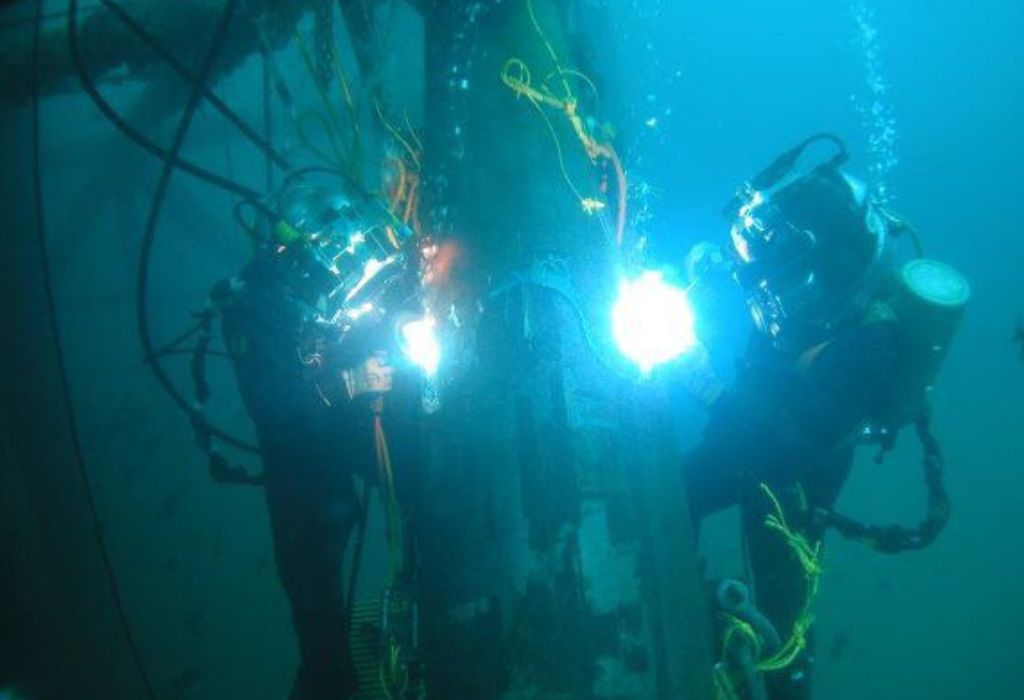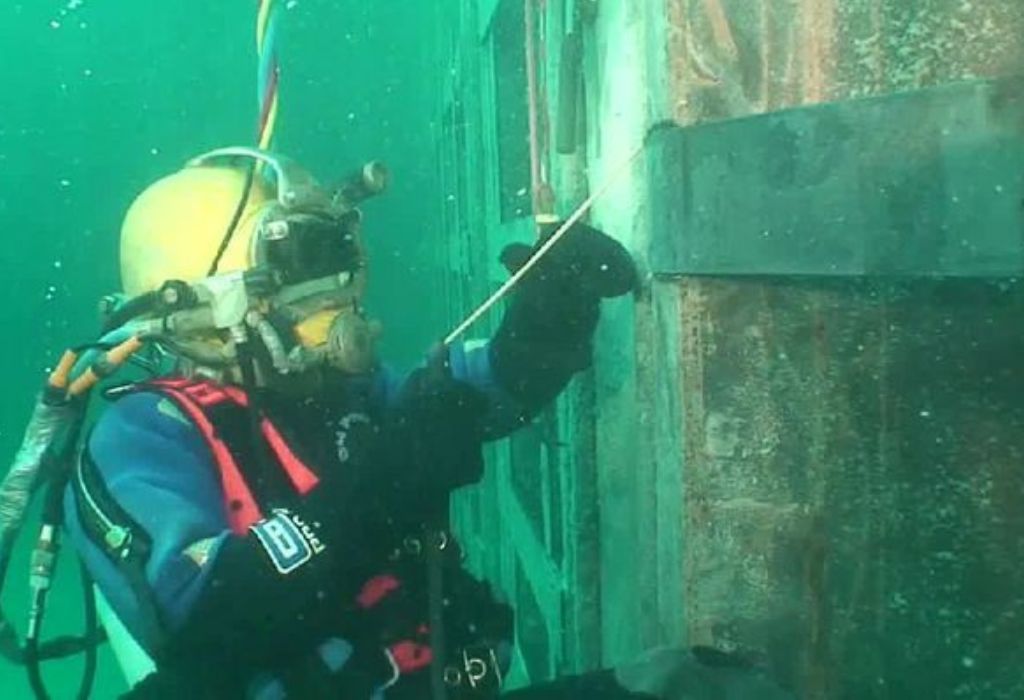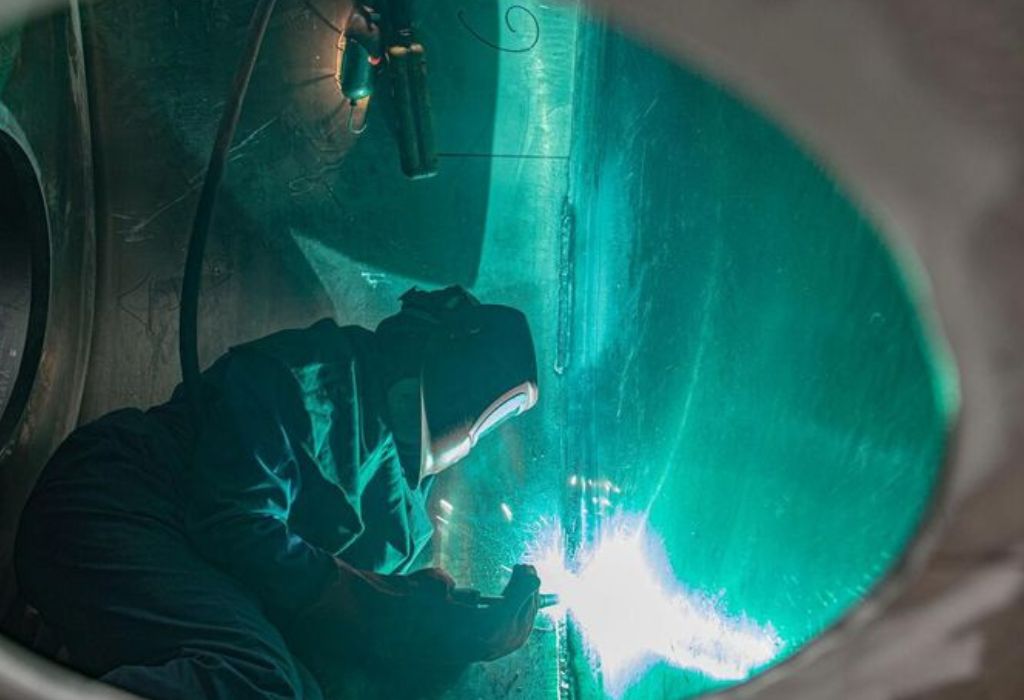The world beneath the surface is as unforgiving as it is fascinating. For underwater welders, it’s a place where steel, electricity, and the sea collide — creating one of the most dangerous jobs on Earth.
Each dive is a calculated risk, where precision meets pressure, and a single mistake can mean disaster.
Imagine working hundreds of feet below, surrounded by darkness, freezing temperatures, and strong underwater currents.
Every spark from the welding arc ignites against a backdrop of compressed air and dissolved gases, making even a small error potentially lethal. According to industry research, the fatality rate among underwater welders is estimated at 15 times higher than that of other welding professions (Naylor Law).
This startling figure reveals just how extreme the environment truly is.
But what makes it so perilous? The risks of underwater welding extend beyond electrocution or explosions. Divers face constant threats from decompression sickness, toxic gas exposure, and equipment failure.
The surrounding water amplifies every hazard — turning heat, pressure, and electricity into unpredictable forces. Even with years of training, welders must remain hyper-alert to survive every descent.
Yet, this high-risk profession is essential for maintaining offshore oil rigs, ship hulls, and underwater pipelines. Without these specialists, many marine structures would fail, halting global operations.
In this article, we’ll explore what are the risks of underwater welding, why it’s considered one of the world’s most hazardous trades, and how technology and strict safety protocols are helping welders reduce those dangers while working in the depths.
What Is Underwater Welding?

Underwater welding is a specialized process where metal structures are fused together below the water’s surface. It combines the technical skill of welding with the physical demands of commercial diving. Welders perform these tasks in extreme conditions—deep under oceans, lakes, or rivers—where pressure, visibility, and temperature vary drastically.
This unique trade is vital for maintaining offshore platforms, underwater pipelines, ships, and marine structures. Without underwater welding, global industries like oil, gas, and shipping would struggle to operate efficiently. However, performing electrical welding in water introduces dangers that make this profession one of the toughest in the world.
Wet Welding vs. Dry (Hyperbaric) Welding
In wet welding, welders operate directly in the water using waterproof electrodes. It’s faster and less expensive but significantly more dangerous due to exposure to electricity, gas bubbles, and unstable currents.
In dry or hyperbaric welding, the job is done inside a sealed chamber filled with gas at controlled pressure. This method minimizes the risks of electrocution and contamination but demands more setup, time, and cost.
Both methods require precision and specialized equipment to ensure survival in harsh underwater environments.
What is wet underwater welding?
Wet welding is done directly in water using electrodes designed for underwater arcs.
What is hyperbaric (dry) welding?
It’s welding inside a sealed chamber filled with gas, keeping the environment dry and controlled.
Which method is safer?
Hyperbaric welding is safer but more expensive; wet welding involves higher risks of shock and explosion.
Why is wet welding still common?
It’s faster and cost-effective for emergency underwater repairs.
Do welders need diving certifications?
Yes. All underwater welders must be certified commercial divers with advanced training.
Why Underwater Welding Is Viewed as High Risk
Unlike land-based welding, underwater welding adds the complexity of pressure, gas, and current flow. It’s a mix of two hazardous professions—diving and welding—each with its own life-threatening dangers. When combined, the risks multiply.
The underwater welder’s environment constantly changes. Water conductivity increases electrocution risks, while deep-sea pressure affects breathing and movement. Many accidents happen not from mistakes but from unpredictable conditions like current surges or equipment malfunction.
Statistics from multiple studies suggest that underwater welding has a mortality rate between 5% and 15%, depending on the environment and safety compliance (BoatLaw). This figure alone highlights why it’s regarded as one of the world’s deadliest professions.
Why is underwater welding so risky?
Because it combines high-voltage electricity with a pressurized aquatic environment.
Are accidents common underwater?
Yes. Even with strict procedures, unpredictable factors like gas buildup or current shifts cause frequent incidents.
Do divers face higher long-term health issues?
Absolutely. Continuous exposure to pressure and toxic fumes affects the lungs, ears, and nervous system over time.
Electrical Shock and Electrocution
Water is a natural conductor, meaning even a small electric leak can travel rapidly through the surrounding area. A welder’s body, if not insulated properly, can become part of that circuit. Faulty cables, damaged electrodes, or poor insulation can all lead to fatal electric shocks.
Electric currents are unpredictable underwater. Even low-voltage shocks can cause muscle spasms, disorientation, or unconsciousness—often resulting in drowning before rescue is possible.
How can underwater welders avoid electrocution?
They use waterproof electrodes, insulated tools, and DC power sources designed for underwater use.
Why is saltwater more dangerous?
Because saltwater conducts electricity far better than freshwater, increasing the risk of fatal shock.
Can modern equipment eliminate this danger?
Not completely. Even with advanced insulation, human error or damaged gear can cause accidents.
What happens if current passes through the body?
It can cause immediate cardiac arrest, burns, or unconsciousness underwater.
Decompression Sickness and Pressure-Related Injuries
When welders surface too quickly after deep dives, nitrogen bubbles form in their bloodstream—a condition known as decompression sickness or the bends. It causes joint pain, paralysis, or even death if untreated.
Rapid changes in pressure also lead to barotrauma, damaging the lungs, ears, and sinuses. These conditions can permanently impair a diver’s health.
What causes decompression sickness?
Rapid ascent without proper decompression stops causes gases to expand in the body.
How do divers prevent it?
They follow strict dive tables and decompression protocols supervised by dive teams.
What is barotrauma?
It’s physical damage caused by unequal pressure in the ears, lungs, or sinuses during ascent or descent.
Is decompression sickness fatal?
Yes, if untreated, it can lead to embolisms, paralysis, or death.
Drowning and Entrapment
Even expert divers are not immune to drowning. Loss of consciousness from electric shock, oxygen depletion, or gear malfunction can lead to fatal incidents. Poor visibility and tangled umbilical lines add to the risk.
Entrapment is another serious hazard. Welders can become stuck under structures, in wrecks, or near collapsed materials, unable to surface in time.
How can welders drown even with oxygen gear?
If the supply line fails, or they lose consciousness before activating backups.
What is entrapment underwater?
When divers get trapped by debris, tools, or confined spaces.
Do safety divers prevent drowning?
They reduce the risk but can’t always respond instantly, especially in deep-water conditions.
Explosions and Gas Pockets

During underwater welding, intense heat splits water molecules, releasing hydrogen and oxygen gases. If these gases collect in confined areas, they can ignite, causing violent underwater explosions.
Even a small pocket of trapped gas can trigger an explosion when exposed to an electric arc. These incidents are catastrophic, destroying equipment and endangering the entire dive crew.
Why do gas pockets form?
The welding arc separates water into hydrogen and oxygen gases that can accumulate nearby.
Can they ignite easily?
Yes. The electric arc or friction can ignite them instantly.
How do divers prevent explosions?
By venting gas bubbles and monitoring hydrogen concentration in real time.
Burns and Thermal Injuries
Although surrounded by water, underwater welders can still suffer burns. The arc produces intense heat exceeding 10,000°F (≈5,500°C). Contact with hot metal or equipment causes immediate thermal injury.
Additionally, escaping steam or overheated gas pockets can scald exposed skin. The risk is highest during wet welding where direct water contact intensifies unpredictably.
Can burns really occur underwater?
Yes. The arc’s heat and metal contact easily cause severe burns.
How do welders prevent this?
By using flame-resistant suits and maintaining distance from molten metal.
Are thermal burns common?
They’re less frequent than electrical or decompression injuries but still serious when they occur.
Hypothermia and Fatigue
Cold water drains body heat rapidly, even through protective suits. Prolonged exposure leads to hypothermia, slowing reflexes and clouding judgment. Fatigue then compounds mistakes, making accidents more likely.
Low temperatures also stiffen muscles and reduce breathing efficiency, increasing the risk of disorientation underwater.
At what temperature does hypothermia start?
Below 60°F (15°C), heat loss accelerates dangerously.
How do welders stay warm?
By wearing insulated drysuits and taking surface breaks between dives.
Can fatigue cause accidents?
Yes. Tired divers are slower to react and more prone to equipment errors.
Long-Term Health Effects
Repeated exposure to high pressure, vibration, and toxic fumes has lasting impacts on a welder’s health. Conditions such as chronic joint pain, hearing loss, and lung damage are common after years in the trade.
Some studies suggest long-term neurological issues due to gas absorption and repeated decompression cycles.
What are the chronic effects of underwater welding?
Hearing loss, lung irritation, and musculoskeletal pain.
Can gas exposure affect the nervous system?
Yes. Long-term exposure to oxygen and nitrogen mixtures can impair brain function.
Do divers retire early?
Most underwater welders leave the field before age 40 due to cumulative physical strain.
Environmental and External Hazards
Beyond mechanical and electrical dangers, divers face threats from marine life, strong currents, and poor visibility. Unexpected wildlife encounters or debris strikes can disorient or injure welders.
Structural collapses or sudden current shifts also pose immediate danger, often without warning.
How do strong currents affect welders?
They make it harder to maintain stability and can rip equipment lines.
Do marine creatures pose danger?
Yes. Jellyfish, sharks, or venomous species can threaten divers in certain regions.
Can debris or collapse occur suddenly?
Absolutely. Even minor vibrations can destabilize underwater structures during welding.
Safety Measures and Risk Mitigation
Despite the extreme dangers, modern technology and strict procedures have significantly reduced accident rates in underwater welding. Safety begins with training and equipment integrity.
Rigorous Training and Certification
Only certified commercial divers who complete advanced underwater welding programs are allowed to work professionally. They’re trained in pressure control, hazard response, and rescue operations.
Why is training so critical?
Because most accidents stem from procedural mistakes or panic during emergencies.
Specialized Equipment and Redundancy
Professional welders use waterproof DC systems, insulated suits, and redundant oxygen supplies. All systems undergo frequent checks before dives.
How often is equipment tested?
Before every shift, and certified monthly under industry regulations.
Strict Dive and Welding Protocols
Pre-dive checklists, decompression schedules, and continuous communication are mandatory. Dive supervisors monitor depth, gas mix, and welder vitals in real time.
Can strict protocols eliminate risk?
Not fully, but they drastically reduce fatal outcomes.
Environmental Assessment and Monitoring

Before each operation, conditions such as current speed, water temperature, and visibility are assessed. Gas sensors detect hydrogen buildup to prevent explosions.
Emergency Preparedness
Backup divers, tether lines, and real-time communication are essential. Every operation includes a surface team ready for rapid extraction.
Future Trends and Technological Advances
The future of underwater welding is evolving rapidly. Robotics and remotely operated vehicles (ROVs) are now handling many high-risk welds. Automation minimizes human exposure while improving precision.
Innovations in hyperbaric chamber design and AI-based monitoring systems are also reducing accidents. Advanced non-destructive testing (NDT) tools allow inspections without physical dives, further protecting workers.
Will robots replace human welders?
Partially. ROVs are ideal for repetitive or extreme-depth work, but humans are still needed for complex repairs.
How does AI improve safety?
AI tracks diver vitals, gas concentration, and pressure in real time, predicting risks before accidents happen.
Conclusion
Underwater welding is one of the most fascinating yet dangerous professions ever created. The blend of electricity, metal, and deep-sea pressure pushes human capability to its limits. From electrocution and decompression sickness to explosions and hypothermia, the risks are immense and constant.
However, with modern safety systems, advanced training, and technological innovation, the dangers are gradually being reduced. The men and women who take on this extreme trade embody courage, expertise, and discipline—balancing danger with precision every time they descend beneath the waves.
For anyone asking what are the risks of underwater welding, the answer is clear: it’s a profession where safety isn’t optional—it’s survival itself.

I’m Darrell Julian, the founder, lead writer, and hands-on welding enthusiast behind ArcWeldingPro.com. With more than 15 years of real-world welding experience, I created this platform to share what I’ve learned in the field, in the shop, and in the heat of the arc.


